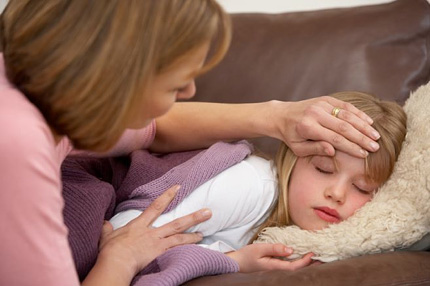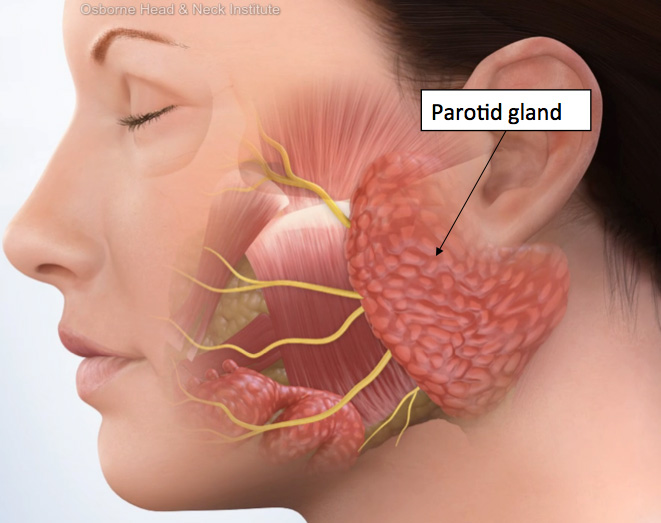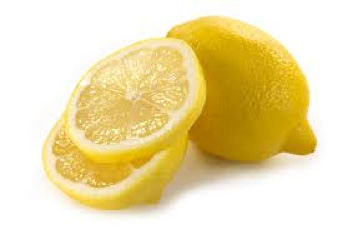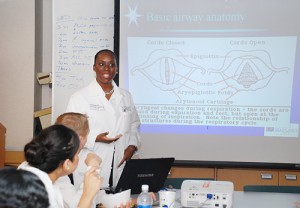- India Medical Mission 2018 - November 1, 2018
- Sleep Disorders: Sleep Apnea and Upper Stimulation Therapy - August 25, 2015
- The Naked Vocalist Podcast Featuring Dr. Reena Gupta - May 27, 2015
- New Therapy for Sleep Apnea – First Sleep Pacemaker placed in California at Osborne Head and Neck Institute. - December 12, 2014
- Boxer’s Ear: Can your ear explode? - December 12, 2014
- Nose Picking (Rhinotillexis) and Septal Perforations: Why I should stop picking my nose…? - November 24, 2014
- Deviated Septum and Septal Perforation - July 28, 2014
- Hereditary Hemorrhagic Telangiectasia: Nasal Septal Perforation Repair - June 25, 2014
- Dr. Mantle recognized at the Beverly Hills Medical Science Academy Awards - May 8, 2014
- Commonly Misdiagnosed Pathologies: Arteriovenous Malformations - April 9, 2014
 How do you treat a salivary gland infection in a child?
How do you treat a salivary gland infection in a child?
Question: My daughter has a painful, swollen red cheek and a mild temperature. She doesn’t want to eat because she says it hurts to eat and to chew. Her pediatrician has started her on antibiotics for a salivary gland infection. What is this and how do you treat it?
Answer:
Salivary glands are saliva-producing tissues in the cheeks, under the jaw, and beneath the tongue. Normally, saliva produced by the gland is drained into the mouth by a network of small tubes called ducts.

If the salivary duct becomes narrowed or blocked, saliva does not drain. This can cause a backup of saliva which may become infected, called sialadenitis. When this occurs in the salivary gland of the cheek, the parotid gland, it is called parotitis. Parotitis results in swelling of the face, fever, and facial pain. The salivary glands normally contract to produce saliva during a meal but contraction of an infected gland can also be painful.
 Sialadenitis can be treated with:
Sialadenitis can be treated with:
- Antibiotics – needed to kill the bacteria causing the infection
- Sialagogues – sour foods or candies that increase salivary flow
- Hydration
- Gland massage
- Warm compresses
While these methods are usually effective, in some children episodes of parotitis can recur. The most common causes of recurrent sialadenitis in children are salivary duct stones and Juvenile Recurrent Parotitis (JRP). Juvenile Recurrent Parotitis (or Recurrent Parotitis of Childhood) is one of the most common causes of salivary gland swelling. JRP is characterized by severe pain, fever, and swelling on one or both sides of the face every 3-4 months until puberty. These patients are normal between episodes but the episodes are not preventable. Treatment has traditionally been limited to aggressive surgery, including removal of the parotid gland. Sialendoscopy now offers a conservative and effective opportunity for relief. This procedure requires subspecialty care by a salivary gland specialist.
Fortunately, salivary gland infections in children often resolve by using the conservative measures above. See your pediatric otolaryngologist if you believe your child may be suffering from sialadenitis.
Key Points
- The salivary glands are responsible for producing saliva and are located in the cheeks, below the jaw, and beneath the tongue.
- Saliva is normally drained into the mouth through a small network of tubes called ducts.
- Blocked or narrowed ducts can lead to saliva backup and sialadenitis, an infection of the salivary glands.
- Conservative measures for sialadenitis or parotitis are antibiotics, sialagogues, hydration, gland massage, and warm compresses.
- Recurrent parotitis is a problem for some children and may require more extensive treatment such as sialendoscopy.
Sialendoscopy is a conservative and effective approach for treatment of salivary gland stones.



